Nehalem Nights: 10 Scenes From Intel's Core i7 Launch Party
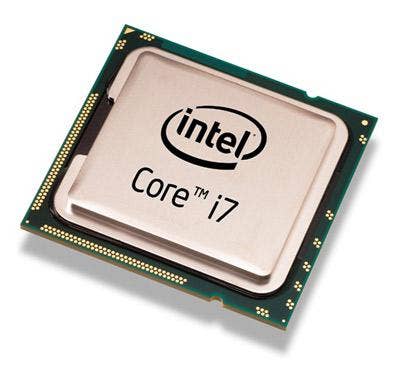
Intel's new Nehalem micro-architecture stormed out of the gate with its first available iterations, three Core i7 desktop processors released Monday that already have system builders and reviewers heaping praise on the Santa Clara, Calif.-based chip giant. Nehalem's introduction also sets up what should be an intriguing battle of 'apples-to-apples' chip competition with smaller rival Advanced Micro Devices of Sunnyvale, Calif. Over the next year, each chip maker will be ramping new product lines that have a number of similarities, marking a convergence of their respective road maps for the first time in years.
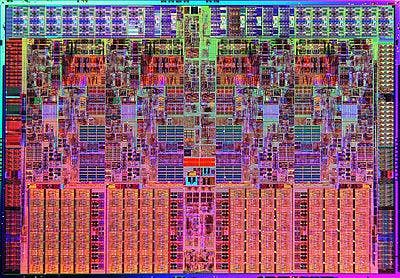
Intel's Nehalem, seen here in a close-up of the processor's micro-architecture, eliminates the Core architecture's Front Side Bus, integrates the memory controller on the die itself and independently powers each of the processor cores in these multicore chips for a "native" multicore design similar to the one that AMD embraced several years ago. AMD's recently released Shanghai server processors mark the smaller company's transition to the 45nm fabrication process Intel pioneered a year ago, and AMD will match its larger rival on that technology node until Intel makes its next major transition to 32nm late next year.

Intel officially lifted the curtains on the Core i7 on Nov. 17 at three different global locations, kicking off with a "Midnight Madness"-style block party in Tokyo. Events in San Francisco and New York rounded out the slate. System builders, software developers and other guests were floored by the new processors' raw power at the San Francisco launch party, held in that city's new hipster mecca, Dogpatch Studios.

Pat Gelsinger, GM of Intel's Digital Enterprise Group, shows off a Core i7 silicon wafer at Monday's launch event in San Francisco. Kick-starting the Nehalem conversation is, naturally, the Core i7-965 Extreme Edition -- a 3.2-GHz quad-core processing monster with 8 MB of L3 cache that is priced at just $999, or about $500 less than Intel's top Core 2 Quad Extreme Edition desktop chip built on the older micro-architecture. The first Nehalem lineup also includes the Core i7-940 (2.93-GHz, 8-MB L3 Cache, $562) and the Core i7-920 (2.66-GHz, 8-MB L3 Cache, $284).
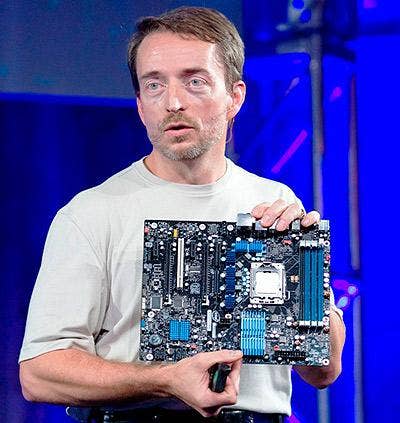
Intel's Pat Gelsinger also showcased Intel's DX58SO Extreme Series "SmackOver" motherboard with the new X58 chipset at Monday's event in San Francisco. CRN's Test Center, reviewing the Core i-965 Extreme Edition on the SmackOver board, described "nearly historic levels of improvement over previous generations of processors" from Intel or any other vendor. "Intel's next-generation Nehalem processor lineup is so powerful that it simply destroys previous CPU benchmarks. An early look at the company's new chips shows they have the potential to drive current data center-class performance onto the desktop," wrote CRN Test Center's Brian Sheinberg in his initial Core i7 review.
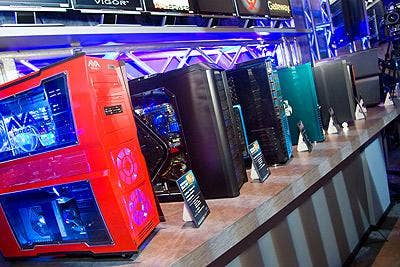
Intel showcased custom systems built on its new Core i7 chips at its San Francisco launch party on Monday. Included in the mix were desktops from large OEMs like Dell and Acer, but also glossy new rigs built by smaller regional system builders. "It's a lot faster than I'm used to," said one 3-D animator at the event, referring to a custom-built Core i7-965 Extreme Edition desktop put together by Puget Systems of Kent, Wash.
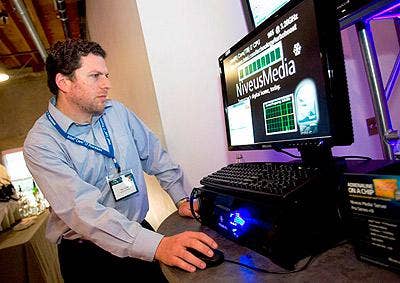
Intel's Ben Gould demos new software from Niveus Media on a Core i7-965 Extreme Edition system at Monday's launch party in San Francisco. With the move to triple-channel DDR3 memory on the new Nehalem micro-architecture, developers will have new challenges in engineering software for these processors, particularly when Intel begins ramping new Xeon server chips with DDR3 memory in the coming months.
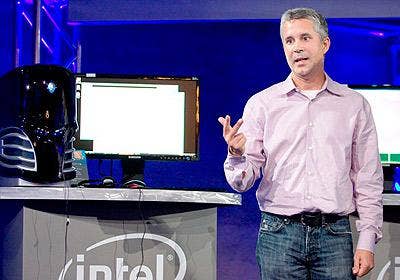
Arthur Lewis, head of gaming at Round Rock, Tex.-based Dell, offers a look at the computer maker's new Alienware Area 51 desktop rig based on the Core i7 processor from Intel. Two-thirds of the systems on display at Monday's launch event in San Francisco featured ATI Radeon discrete graphics cards from AMD.
Even as Intel and AMD go head-to-head on CPUs, the graphics side of AMD's house actually stands to gain from its longtime rival's success with Nehalem because ATI validated its CrossFire technology for Core i7 platforms faster than discrete graphics market leader Nvidia of Santa Clara, Calif. greenlighted SLI, according to Intel's Gelsinger. AMD acquired graphics chip maker ATI more than two years ago, but it still takes some getting used to when an AMD spokesperson like Rick Bergman, GM of the Graphics Product Group, openly praises Intel's Core i7, as he did in a recent chat with CRN.
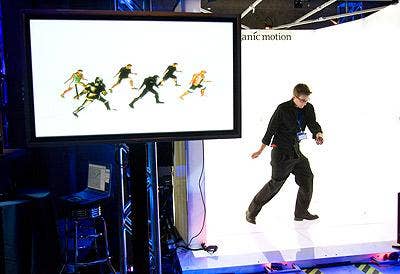
Organic Motion demos its virtual camera product during the debut of the Core i7 processor at Monday's launch event in San Francisco. The New York-based developer of advanced motion capture systems was one of several technology innovators brought to the event by Intel to demonstrate the superior processing capabilities of Core i7-based computers.
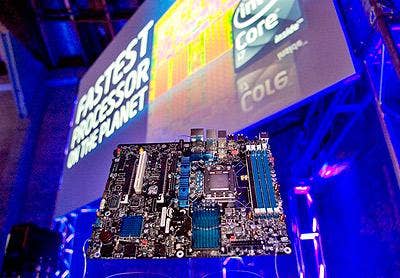
Given the current economic uncertainty and the fact that Intel's new Nehalem products require brand-new hardware platforms like the SmackOver motherboard, it's unclear how fast this stunning new technology will be adopted -- particularly in the portion of the IT reseller channel serving businesses.
The first Core i7 desktop processors are clearly going to have enthusiastic fans amongst gamers and other power users, but that's a relatively small part of the overall market for computing power. One regional system builder told ChannelWeb he expects to still be delivering nine out of 10 processors based on the older Core architecture well into 2009.